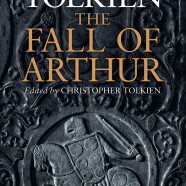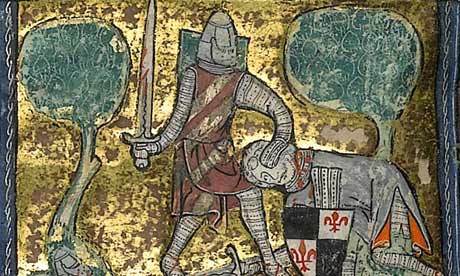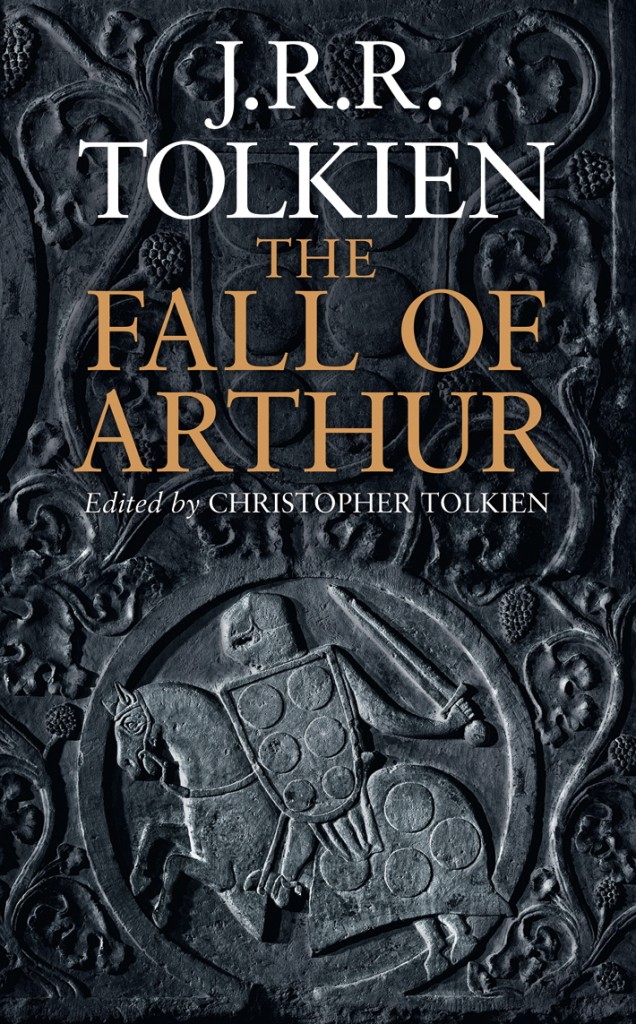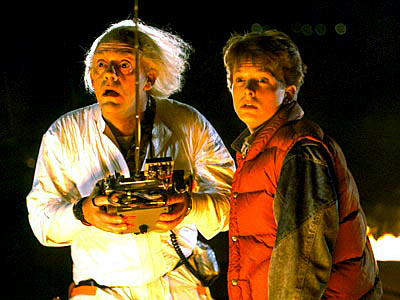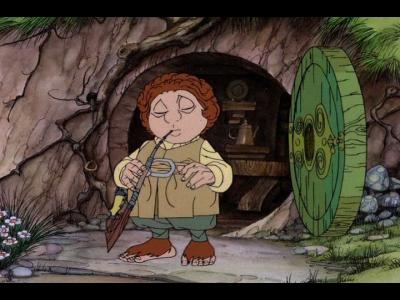The Return of the (Once and Future) King
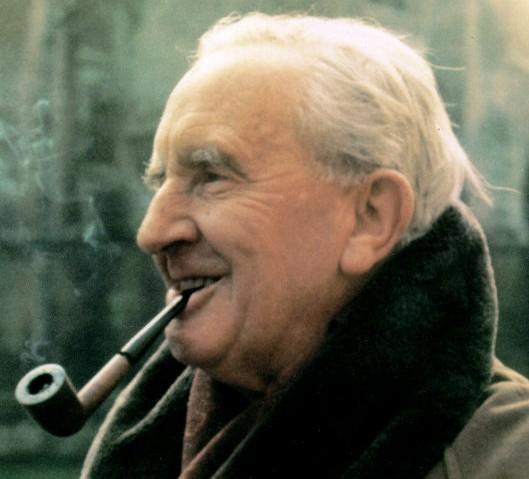 Not in my wildest hopes did I expect to see this in this life or the next.  More than that, I’m wondering how this escaped my notice until now.
Not in my wildest hopes did I expect to see this in this life or the next.  More than that, I’m wondering how this escaped my notice until now.
With the 10th annual Tolkien Reading Day upon us on the 25th, my mind naturally turns to thoughts of the J.R.R. Tolkien and his masterworks.  Years ago, I picked up Humphrey Carpenter’s biography of the master, and within its pages were barest mention of an unfinished epic poem: The Fall of Arthur.  It seems that Tolkien had a natural gravitation towards the Arthurian legend, as one might expect of a man with his literary background, but felt that the legend had evolved into something far less than was intended.  Indeed, he shared this sentiment about the course Britain herself took after 1066, and it’s an expression that led him to create stories of Gondolin, Rohan, and other tales of Middle Earth. Those tales were all informed by his understanding of ancient language, literature, and mythology, and the one legend in all of Britain that stands head and shoulders above the rest is, of course, that of Arthur.
Despite the professor’s death 40 years ago this September, his son Christopher (whom I believe to be one of Britain’s greatest national treasures) has seen to it that many of his father’s unfinished works and notes are published and illuminated with his own understanding.  I had mistakenly assumed that after The Children of Hurin and The Legend of Sigurd and Gudrun that perhaps the well had run dry, that I would never see the master’s interpretation of the one story that demanded to be told through his pen.
I have never been so happy to be so wrong.
Tolkien’s The Fall of Arthur is available in hardcover this May.  Mine is now on pre-order.  Go figure.
The Fall of Arthur, the only venture by J.R.R. Tolkien into the legends of Arthur King of Britain, may well be regarded as his finest and most skillful achievement in the use of the Old English alliterative metre, in which he brought to his transforming perceptions of the old narratives a pervasive sense of the grave and fateful nature of all that is told: of Arthur’s expedition overseas into distant heathen lands, of Guinevere’s flight from Camelot, of the great sea-battle on Arthur’s return to Britain, in the portrait of the traitor Mordred, in the tormented doubts of Lancelot in his French castle.
Unhappily, The Fall of Arthur was one of several long narrative poems that he abandoned in that period. In this case he evidently began it in the earlier nineteen-thirties, and it was sufficiently advanced for him to send it to a very perceptive friend who read it with great enthusiasm at the end of 1934 and urgently pressed him ‘You simply must finish it!’ But in vain: he abandoned it, at some date unknown, though there is some evidence that it may have been in 1937, the year of the publication of The Hobbit and the first stirrings of The Lord of the Rings. Years later, in a letter of 1955, he said that ‘he hoped to finish a long poem on The Fall of Arthur’; but that day never came.
Associated with the text of the poem, however, are many manuscript pages: a great quantity of drafting and experimentation in verse, in which the strange evolution of the poem’s structure is revealed, together with narrative synopses and very significant if tantalising notes. In these latter can be discerned clear if mysterious associations of the Arthurian conclusion with The Silmarillion, and the bitter ending of the love of Lancelot and Guinevere, which was never written.
Many Tolkien fans and scholars will naturally separate this new work from his Middle Earth tomes, but I would offer the suggestion that there should be no separation given how one informed the other and are intrinsically tied together.  But that’s just my thoughts.  No matter how you choose to view it, the important thing is, at long last we will have the opportunity to do so.

